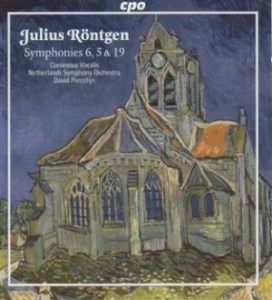There are many definitions of “freedom” in music beyond the question of whether a work is tonal or not. Julius Röntgen’s harmonic language is conservative and traditional, but his style regarding form and content is completely free. These three symphonies demonstrate this fact particularly well. Symphony No. 5, inspired by the events of the First World War, has a finale setting a poem (and a melody) from the Thirty Years’ War, “There is a reaper and his name is Death, and he has power from the great God.” The next symphony in line, No. 6 in one movement, the opening of which you can hear below, borrows an early 16th century Dutch tune, “Great God, to whom shall I lament?” Both works ask for a mixed choir to sing the texts, the former also requiring a tenor soloist (here the pure-voiced Marcel Beekman).
Between 1930 and 1932, roughly speaking, Röntgen composed 19 symphonies (!), including his Symphony No. 19 on the BACH theme. He had apparently composed a piece on this theme in 1870 and played it for Liszt, who told its young composer that the work was junk. That episode ended Röntgen’s relationship with and respect for Liszt forever, but not his love of Bach. This symphony is an unpretentious, graceful essay in four tiny movements lasting only about 16 minutes. Only the finale is notably contrapuntal, but the music has a timeless quality somehow evocative of its subject. As with the other issues in this marvelous ongoing series, the performances are excellent. David Porcelijn, always a reliable guide to unfamiliar repertoire, gets impressive results from the Netherlands Symphony Orchestra. The choir sings beautifully, and the engineering is first class. Very highly recommended.
































